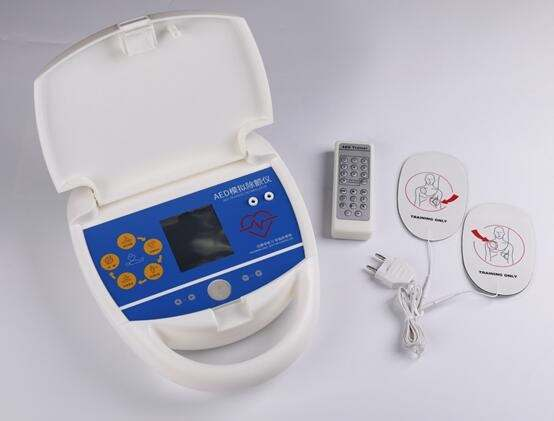13-04-2024
ADA MED SUPPLY LIMITED
The defibrillator is a medical device that plays an important role in the field of medical emergency. Its core value is to correct the patient's arrhythmia by applying strong pulse current and restore the heart to normal sinus rhythm. This kind of equipment can provide rapid and effective treatment in emergency situations such as cardiac arrest, winning valuable rescue time for patients.

The working principle of a defibrillator is mainly based on the stimulation of myocardial cells by electric current. When the heart develops an arrhythmia, the electrical activity of the heart muscle cells becomes abnormal, causing the heart to fail to beat normally. By applying a certain intensity of current to the heart, a defibrillator can temporarily interrupt this abnormal electrical activity, restore myocardial cells to a normal electrophysiological state, and thereby restore the normal beating of the heart.
The design of the defibrillator takes full consideration of the actual emergency situation. It is usually portable and convenient for medical staff to use quickly in various environments. At the same time, the defibrillator is also equipped with intelligent functions, such as automatically analyzing electrocardiograms and determining whether defibrillation is needed, which greatly reduces the difficulty of operation and improves the success rate of first aid.
In hospitals, defibrillators are essential emergency equipment in various departments. Whether in the intensive care unit, emergency department or operating room, defibrillators play a vital role. When a patient suffers cardiac arrest or severe arrhythmia, medical staff can quickly use a defibrillator to treat the patient, buying valuable rescue time for the patient.
The use of a defibrillator requires certain professional knowledge and skills. Before using a defibrillator, medical staff must conduct a comprehensive assessment of the patient to ensure the safety and effectiveness of the defibrillation operation. At the same time, medical staff also need to be familiar with the operating procedures and usage of the defibrillator so that they can use the device quickly and accurately in an emergency.
It is worth mentioning that the popularity and application of defibrillators are gradually expanding to a wider range of fields. In public places such as shopping malls, schools, communities, etc., more and more places are beginning to be equipped with automated external defibrillators (AEDs). This simplified version of the defibrillator can perform first aid operations under the guidance of non-professionals, providing More people provide timely treatment.
However, defibrillators are not a panacea. For some specific types of arrhythmias or severe pathological conditions, defibrillators may not be able to provide effective treatment. Therefore, when using a defibrillator, medical staff need to comprehensively consider the patient's specific situation and condition and formulate an appropriate treatment plan.
To sum up, the defibrillator is a device that plays an important role in the field of medical emergency. It corrects arrhythmia by applying pulse current and restores the normal beating of the heart, providing strong support for the treatment of emergency situations such as cardiac arrest. With the continuous advancement of technology and the continuous expansion of applications, defibrillators will play an even more important role in future medical emergencies.